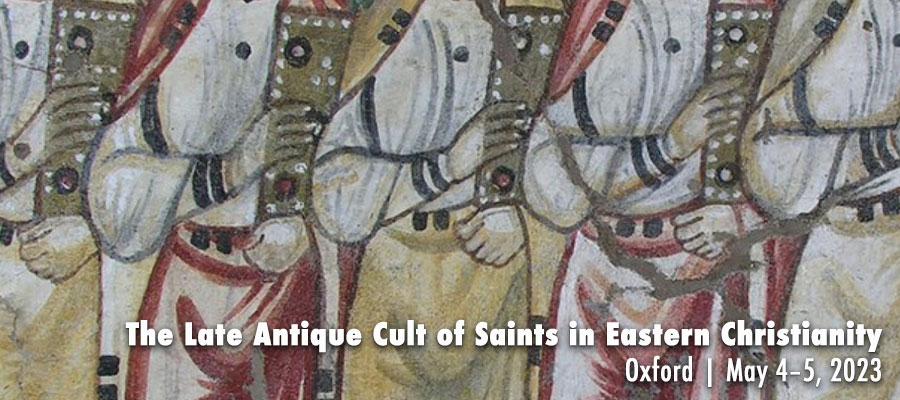The Late Antique Cult of Saints in Eastern Christianity, The Ertegun Scholarship Programme House, University of Oxford, May 4–5, 2023
Scholarship on Late Antique Christianity has long focused on the Christian West, often ignoring communities and liturgical traditions in the Eastern regions of the early Christian world. This resulted in a relative lack of interest, and therefore, scholarship, on numerous communities whose heritage is in danger of disappearing. However, the last couple of decades has seen an increasing focus on these arguably long-forgotten ‘Christianities’ and their communities, heritage, and literary productions.
Following this crucial shift in scholarship, we wish to invite young scholars to a conference at the University of Oxford to further explore the various traditions cultivated in Christian communities residing in these marginalised areas of the Late Antique world. As a tribute to Peter Brown’s legacy in the study of Late Antiquity, the conference will survey these communities through the prism of the cult of saints.
The use of certain saints in narratives and objects provides a glimpse into their function vis-á-vis congregants and the local authorities, whilst also reflecting socio-political and religio-cultural shifts that triggered their creation, canonisation, or abandonment. An examination of the cult of saints of Eastern Christian liturgical traditions will shed light on the complex circumstances experienced by their members, from religious persecution to economic prosperity.
Due attention will be given, therefore, to the function of saints within Eastern Christianity in Late Antiquity, focusing on, but not limited, to Syriac, Armenian, Greek, Ethiopic, Coptic, and Arabic communities. From the strategic translation of a saint’s relics to the propagation of a local cult, holy men and women were used to mediate communal identity and facilitate power. Equally relevant are the saints’ roles in encounters with other religious and ethnic groups: incidents such as sharing a cultic site with another religious group or destroying a temple in the name of a saint demonstrate the ways in which early Christians utilised saints to construct the Other. Recognition will also be given to the use of saints in the secular and domestic sphere, as another way of constructing the Self, including epistolary texts, amulets, or colophons invoking miraculous figures.
We welcome proposals on a wide range of topics, including, but not limited to:
- The role of saints within the Christian community as models of intercession
- Divination and magical practices within the cult of saints
- Gendered saints and gendered cults, and the contribution of women to the cultivation of narratives and practices
- The developing theology of the cult of the saints
- The construction of saints’ narratives
- Bodily practices associated with the cult of the saints
- The utilisation of saints in legal contexts and legislation around saints and their worship
- Appropriation and adoption of saints and their holy sites by other religious or Christian traditions
- Saints and martyrs as intermediaries and interconnectors between different religious or Christian traditions
- The economic and political functions of saints and their shrines
Doctoral students and early career researchers from disciplines such as archaeology, philology, gender and sexuality studies, anthropology, theology, religious studies, art history, the social sciences, and history, are welcome to participate in order to create a critical, fruitful, and interdisciplinary platform for discussion. Papers may last no more than 20 minutes and will be followed by 5 minutes for questions.
